- Home
- Nathaniel Philbrick
Away Off Shore: Nantucket Island and Its People, 1602-1890 Page 8
Away Off Shore: Nantucket Island and Its People, 1602-1890 Read online
Page 8
The Gardners were able to pull it off (for the moment, at least) because even though they did not have control over the proprietary (the body of full-share men who supervised the distribution and use of land), they did have control over the town meeting, where all resident landowners were given a vote. This meant that town meetings became a battleground as the Gardners did everything within their power to loosen the full-shareholders’ grip on the island’s resources. As to be expected, Tristram Coffin and his cohorts fought them every inch of the way, and in 1675 a measure was passed against anyone who “turbulently and disorderly behaves himself in the time of meeting.” Coffin’s dream of a harmonious manor by the sea was looking more remote by the minute.
Stoking the fires of controversy on Nantucket was a series of extremely traumatic events in New York and New England that not only increased the tensions felt by both factions but also made an appeal to off-island authority next to impossible. Just a few months after the Gardners’ visit to the governor, the Dutch recaptured New York, and it was not until October of the following year that the English retook the city and installed Edmund Andros as the new governor. Then in June of 1675 came the outbreak of King Philip’s War. Even though a portion of Nantucket’s Indians had reaffirmed their allegiance to the English and even handed over some of their weapons, there was always the chance that off-island Indians might once again travel to Nantucket and stir up trouble. In September of 1675, Governor Andros dispatched a sloop to Nantucket with “one barrel of powder, ten muskets, and three skeins of match.” The vessel’s captain was instructed “not to stay . . . above one tide unless it may happen that the Indians should flock over from the main [land], and the chief magistrate or officer desire your assistance for obstructing the same by water.” Certainly the prospect of fighting off the Indians from the tiny fort on Gull Island was terrifying to consider.
But it was not just off-island Indians that concerned the Nantucketers. Local Native Americans had become increasingly dissatisfied with their treatment by the English, the result of a controversy that had been brewing ever since Coffin and company first negotiated a deed for island-wide grass rights. As far as the English were concerned, they had purchased exclusive right to all grass on Nantucket from October to May. This was fine with the Indians as long as it did not conflict with their own use of the land. Problems developed, however, when their culture and economy inevitably began to change through contact with the English. What they increasingly coveted were horses. But when the Indians attempted to graze their newly acquired horses on their own land, the English felt justified in confiscating the animals since, in their view, they owned the grazing rights. To be barred from using their own land was inconceivable to the Indians, and they soon began to maintain that they had been illegally denied use of their own land. (Although English Nantucketers would continue to defend their right to winter grass, in 1700 the Earl of Bellomont corroborated the Indians’ point of view when he bluntly informed James Coffin that the deeds were a “circumvention and fraud.”)
But horses were not the only thing the Indians wanted as a result of their exposure to the English. They also wanted rum. And as Obed Macy would observe, this had a corrosive, even lethal effect on their health and culture. At this time, Obed’s great-great-grandfather, Thomas Macy, was the town’s chief magistrate; he was also one of the few full-share men to back the Gardner cause. However, as the pressures mounted during King Philip’s War, a fault line began to develop between himself and Gardner over the issue of supplying liquor to the Indians.
In Thomas Macy’s view, rum was the chief culprit when it came to degrading and agitating Nantucket’s native population. In a letter to the governor, he maintained that “they have been by the drunken trade kept all the while like wild bears and wolves in the wilderness.” Although “some that dwell elsewhere” were originally responsible for supplying drink to the Indians, they were now getting their liquor, according to Macy, from none other than Captain John Gardner, who recruited Indian fishermen by promising “each man a dram before they go out to fishing in the morning.” At some point Macy and Gardner had a falling-out, causing the town’s chief magistrate to shift his alliances to the more conservative Coffin group, who supported the enforcement of laws against selling liquor to the Indians.
By the fall of 1676, the defection of Macy and others, when combined with the arrival of Peter and James Coffin (who temporarily moved to Nantucket seeking refuge from the war), had made the full-share faction “the bigger party” at town meeting. Just as Gardner and the half-share men had attempted to reshape the island’s government in their own image, now Coffin and company proceeded to “mold all things after their pleasure,” according to Gardner. With the threat of Indian war hovering over the island, a weirdly giddy, almost carnival atmosphere began to characterize town meetings as the full-share men made no attempt to disguise the glee with which they attended to their own interests.
Leading the way was Stephen Hussey, a paradoxically bellicose Quaker who would gain a reputation for litigiousness. The son of Christopher Hussey, one of the first purchasers, Stephen was a little younger and a little more animated than many of his fellow full-share men and had spent some time in Barbados before removing to Nantucket. According to Folger, it was Hussey who carried out the “design in such a rude manner” at town meeting, flippantly proposing that Peter Coffin be voted into office so that the town could collect a ten-pound fine from him when he returned to the mainland after the war. Hussey also proposed the election of “two young men more” for the simple reason that he had “cattle at their houses to winter” and wanted to make sure that the potential officeholders took good care of his livestock. Folger finally erupted in anger, scolding Hussey and the others “not to make a May game of choosing men for such employment.” But Folger’s words had little effect. “As they began,” he ruefully commented in his letter to the governor, “so they ended.”
It was only a matter of time before the new full-share administration directed its attention to the problem of Peter Folger, the town clerk who refused to give them access to the court book that contained documents vital to the claims of both factions. Convinced that Macy and Coffin planned to alter the official records in their own favor, Folger refused to hand the book over, and, as we have already seen, in February he was thrown in jail.
Things soon went from bad to worse. In March the town issued an order forbidding “Captain Gardner and Peter Folger . . . to meddle at all . . . in any of the town’s concerns.” Then in June, after two attempts, Constable Bunker forcibly brought Gardner to court for reportedly spreading the rumor among the Indians “that there was no government on Nantucket.” Gardner was in no mood to cooperate, and according to the sentence written by Matthew Mayhew, he “demeaned himself most irreverently, sitting down with his hat on [and] taking no notice of the court.” At this same court session, both Gardner and Folger were officially disenfranchised.
Although there were some fairly complex issues involved in what has become known as the “Half-Share Revolt,” it all came down to two men—John Gardner and Tristram Coffin—who had grown to hate each other. Perhaps they were too much alike. Both were forceful men who had come to the island so that they might do as they wished. But even though Coffin staked out a claim at Capaum and Gardner went east to Wesco, the island was not big enough for the two of them. Coffin saw the island in truly medieval terms, with the tradespeople at the bottom of the pyramid and the landowners at the top. But Gardner was not about to submit to this pigeon-holing, no matter how the laws of the proprietary might read.
It was also a generational conflict. In 1677 Coffin was seventy-two years old and already beginning to hand over the management of his properties to his children; Gardner was a still vital fifty-three, unwilling to show Coffin and the other graybeards what they considered to be the proper degree of respect. Perhaps no document better illustrates the animosity between these two men than Coffin’s recorded testimony concerning Gardner
’s conduct during the General Court session on June 6, 1677. When Gardner came into the room, he made a point of taking a seat beside Coffin “on a chest where I sat.” According to Coffin, “I spoke to him and told him that I was very sorry that he did behave himself [in this way. He] said: ‘I know my business and it may be that some of those that have meddled with me had better have eaten fire.’ ”
In August, Governor Andros, after receiving a flurry of contradictory letters from both factions, issued his long-awaited decision. Offering his official support of Macy as chief magistrate (who would be replaced by Tristram Coffin in September), Andros also insisted that all charges against Folger and Gardner be dropped. The full-share men, however, chose to ignore the second half of the decision. Under the pretense that the governor was “without knowledge of the facts,” they continued to sell off Gardner’s cattle to pay his fine. In March of 1678, Thomas Mayhew, a staunch supporter of Coffin and the full-share cause, smugly informed Gardner “that if the governor did unwind then he would wind; and that he would make my fine and disenfranchisement to abide on me.”
By June of 1678, almost a year and a half after Folger’s initial imprisonment, most of the English on Nantucket had become sick and tired of the in-fighting. At this point a compromise was reached that paved the way for the gradual reconciliation of the two factions. As long as the half-share men agreed to transfer all their individual land purchases from the Indians to the “capacity of the whole,” then the full-share men agreed that the half-share grants “shall not be confined to the first township . . . but shall, according to proportion, extend throughout the whole island.” At long last, all those with a stake in the proprietary—full- and half-share men alike—were included in future divisions of land. Six months later the order against Folger and Gardner acting as agents of the town was rescinded.
Coffin, however, still held a grudge. In January of 1680, when John Gardner was elected to serve on the island’s General Court, Coffin and Mayhew used their influence to oppose the town’s nomination, declaring that Gardner was “incapacitated to bear such an office of trust.” In clear defiance of Coffin, who seems to have been alienating an increasing number of once loyal supporters through his unreasonable bitterness toward Gardner, the town nominated John and Richard Gardner to be the island’s chief magistrates.
By this point, Coffin’s star was clearly on the decline. Two years before in September, 1678, he had supervised the salvage of a French ship wrecked on Nantucket shoals. Then in October, hearing that “portions of the cargo and rigging were being carried away,” Governor Andros ordered Coffin to “prevent embezzlement and secure as much property as possible.” Directing the operation in his typically authoritarian way, Coffin failed to follow established procedures and in 1680 was found guilty of numerous violations by the admiralty court.
Here, at long last, was an instance in which Coffin could not simply do as he pleased. Faced with a hefty fine and the possibility of serving time in jail, Coffin appealed to his hated foe, John Gardner (who had sat on the admiralty court), for help. Eating a large slice of humble pie, Coffin admitted to Governor Andros that he had acted “contrary to the law . . . through ignorance in regard of not being acquainted with the maritime laws,” then made what must have been a painful reference to “my loving neighbor, Captain John Gardner,” who had apparently spoken in his behalf. That November Andros discharged Coffin on the matter; a year later Coffin was dead.
With Coffin’s aggressively conservative voice forever silenced, the town was now in a position to begin the work of reconciling its differences. Signaling the emergence of a new consensus was the renewal of negotiations with the Indians concerning grass rights in 1682. In exchange for what became known as “winter feed” rights throughout the island, the town granted the Indian sachems the right to graze a limited number of horses and cattle. Known as “horse commons,” these deeds gave the Indians the opportunity to participate, albeit on a limited basis, in the proprietary, thus resolving (temporarily, at least) the Indians’ side in the Half-Share Revolt.
The symbolic resolution of the conflict would not occur, however, until 1686 with the marriage of Peter Coffin’s son Jethro and John Gardner’s daughter Mary. Tradition tells us that Coffin provided the lumber and Gardner provided the land for the couple’s new home, now known as the Oldest House on Sunset Hill. According to this same tradition, Coffin held up the wedding ceremony until Gardner registered the deed to the land, indicating that old suspicions died hard.
From these and other intermarriages among the children of the first settlers would emerge a community in which the names remained remarkably the same, with the Coffins, Gardners, Macys, Starbucks, Folgers, Swains, Bunkers, Barnards, Colemans, and Husseys dominating island life for the next 100 years. Indeed, although Tristram Coffin may have died thinking that he had ultimately lost out to Gardner and the forces of change, in the end it was Coffin’s conservatism that won out. Even as whaling and Quakerism transformed the island economically and religiously in the century to come, the community remained faithful to Coffin’s conception of Nantucket as a familial stronghold. Wrote one observer, “Before the Revolution, the people of Nantucket were like a band of brothers. They were an unmixed race, of English descent. They were all clad in homespun and minded their own business.” According to Walter Folger writing in 1791, “The inhabitants live together like one great family, not in one house, but in friendship.”
There was, however, a darker side to this intimacy. Given the limited number of families on Nantucket in the seventeenth century, it was inevitable that second- and third-generation Nantucketers would have to look dangerously close to home (from a genetic point of view) when it came to choosing marriage partners. In 1693, Matthew Mayhew on the Vineyard commented that the English on Nantucket, “having many years married in the relation of first and second cousins,” were “so nearly related” that it was impossible to find an impartial jury to hear court cases. Although no medical records exist, one commentator has insisted that these marriage patterns meant that “mental defects, deaf mutism, insanity, feeble mindedness, and peculiar traits were common” on the island. One circumstance, however, mitigated against a disastrous thinning of the Nantucketers’ blood. Unlike some towns on Martha’s Vineyard, whose original settlers moved in a group from England only to continue a longstanding tradition of inbreeding (with serious genetic consequences, which included deafness and hermaphroditism), Nantucketers began with a fresh gene pool collected from towns throughout the Merrimack Valley.
Whether or not they were too ingrown for their own genetic good, Nantucketers remained almost fanatically obsessed with maintaining close ancestral alliances. In fact, when an islander recognized a specific family resemblance, he or she proudly referred to it as “Seeing the Look.” Many families kept detailed genealogical records (called a “census”) so that they could determine who were and who were not their “cousins”—an increasingly important distinction on Nantucket around which many business relationships were based (see Chapter 9).
The inevitable result of this attitude, especially given what Crèvecoeur called “their secluded situation, which has prevented them from mixing with others,” was that Nantucketers never strayed far from the ways of the first settlers. Indeed, more than a century after the Half-Share Revolt, an attorney by the name of Phineas Fanning wrote a piece of doggerel about the leading families on the island that rings remarkably true when we consider the players in this seventeenth-century power struggle: Tristram Coffin, autocratic and outspoken; John Gardner, who began his career on Nantucket by quietly undermining his predecessor’s powerbase; Thomas Macy, who (no matter how righteous his intentions may have been) strategically shifted his alliances and as a consequence received more than his share in land grants and other benefits; Edward Starbuck, although not a major player in the Revolt was a man with a known ability to express himself; Stephen Hussey, the Quaker who delighted in questionable shenanigans during that notorious town me
eting; and, finally, Peter Folger, undoubtedly the most intelligent man on the island but who was barely able to support his family:The Coffins noisy, fractious, loud,
The silent Gardners plotting,
The Mitchells good, the Barkers proud,
The Macys eat the pudding;
The Swains are swinish, clownish called,
The Barnards very civil,
The Starbucks they are loud to bawl,
The Pinkhams beat the devil;
A learned Coleman very rare,
And scarce an honest Hussey,
The Rays and Russells coopers are,
The knowing Folgers lazy.
No matter how much things changed on Nantucket in the next 100 years, its people would remain remarkably the same.
CHAPTER 7
The Whaling Legacy of Ichabod Paddock
MORE THAN ANY OTHER people in America and the world, Nantucketers would come to embody an attitude conducive to bloodshed on the high seas. Indeed, killing whales seems to have quickly become an almost reflex reaction on Nantucket. When, in 1744, three islanders came across a forty-foot whale stranded on the shore, they did what any self-respecting Nantucketer would have done—they attacked it with the only weapons they had available, their jackknives.
Where did it come from, this fierceness, this horrifying playfulness, especially once (as we will see in the next chapter) Quakerism began to exert its staid, rigidly nonviolent influence? Certainly, the first settlers, who were mainly landsmen, did not bring it with them. No, whaling was a learned activity on Nantucket, and to begin to understand how the island became the fabled fountainhead of this “most sanguinary” business, as Melville called it, we must look to its original practitioner: Ichabod Paddock, the island’s first professional whaleman.

 Bunker Hill: A City, a Siege, a Revolution
Bunker Hill: A City, a Siege, a Revolution Why Read Moby-Dick?
Why Read Moby-Dick? Second Wind: A Nantucket Sailor's Odyssey
Second Wind: A Nantucket Sailor's Odyssey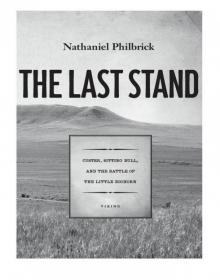 The Last Stand: Custer, Sitting Bull, and the Battle of the Little Bighorn
The Last Stand: Custer, Sitting Bull, and the Battle of the Little Bighorn In the Heart of the Sea: The Epic True Story That Inspired Moby-Dick
In the Heart of the Sea: The Epic True Story That Inspired Moby-Dick Away Off Shore: Nantucket Island and Its People, 1602-1890
Away Off Shore: Nantucket Island and Its People, 1602-1890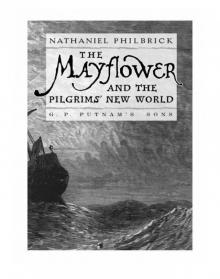 The Mayflower and the Pilgrims' New World
The Mayflower and the Pilgrims' New World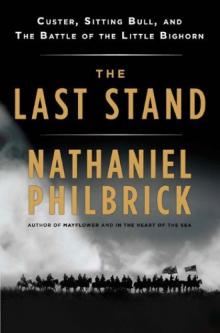 The Last Stand: Custer, Sitting Bull and the Battle of the Little Big Horn
The Last Stand: Custer, Sitting Bull and the Battle of the Little Big Horn Second Wind
Second Wind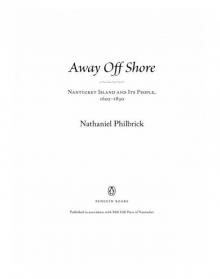 Away Off Shore
Away Off Shore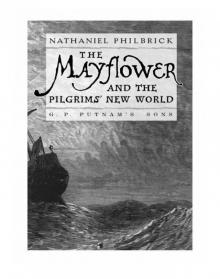 The Mayflower and the Pilgrims' New World*
The Mayflower and the Pilgrims' New World* Sea of Glory
Sea of Glory In the Heart of the Sea
In the Heart of the Sea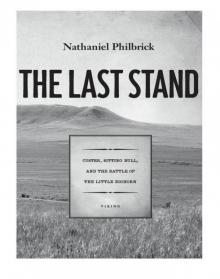 The Last Stand
The Last Stand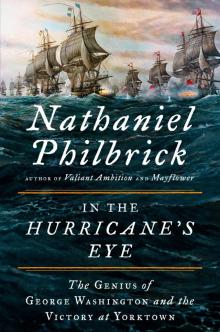 In the Hurricane's Eye
In the Hurricane's Eye